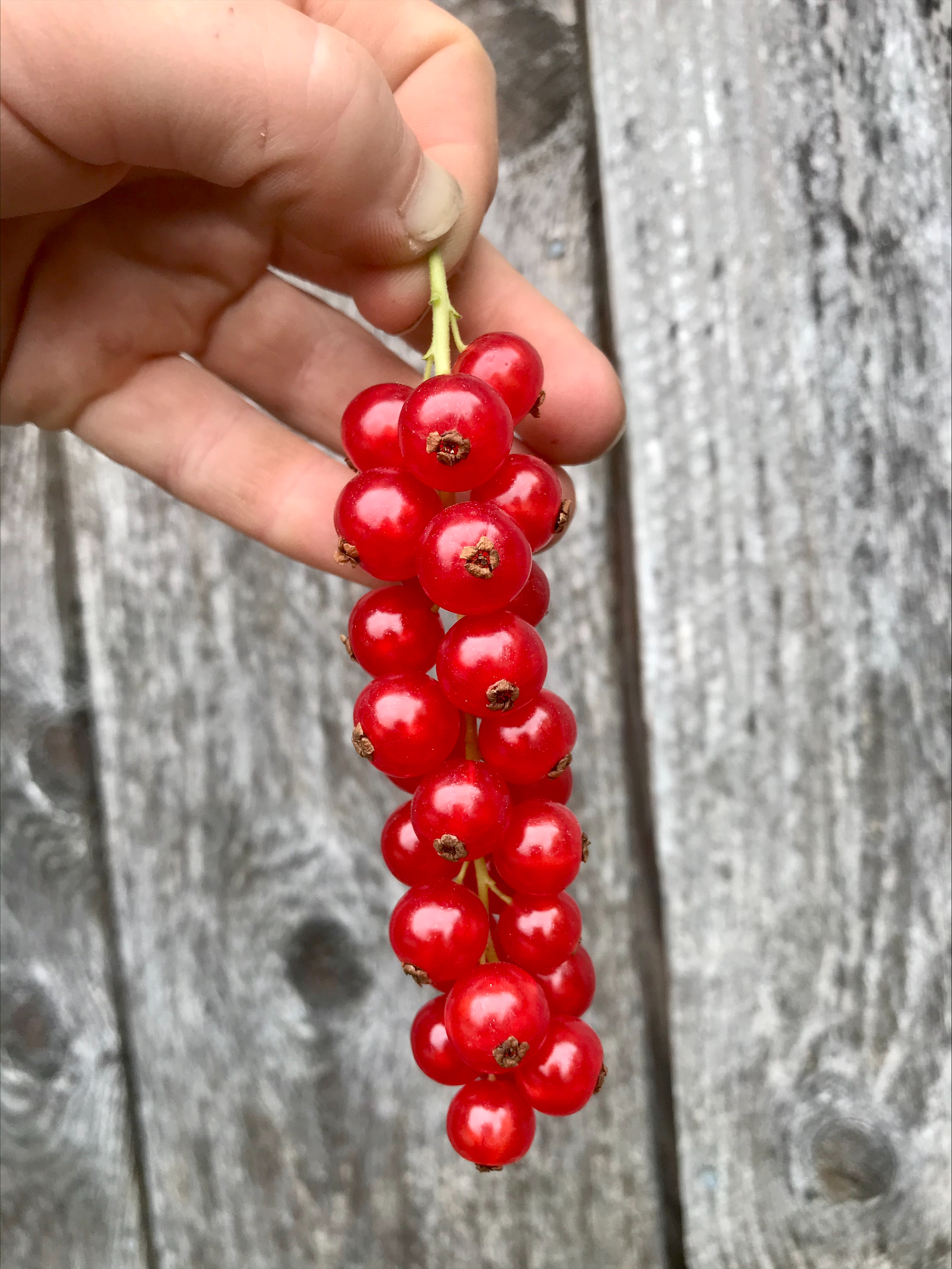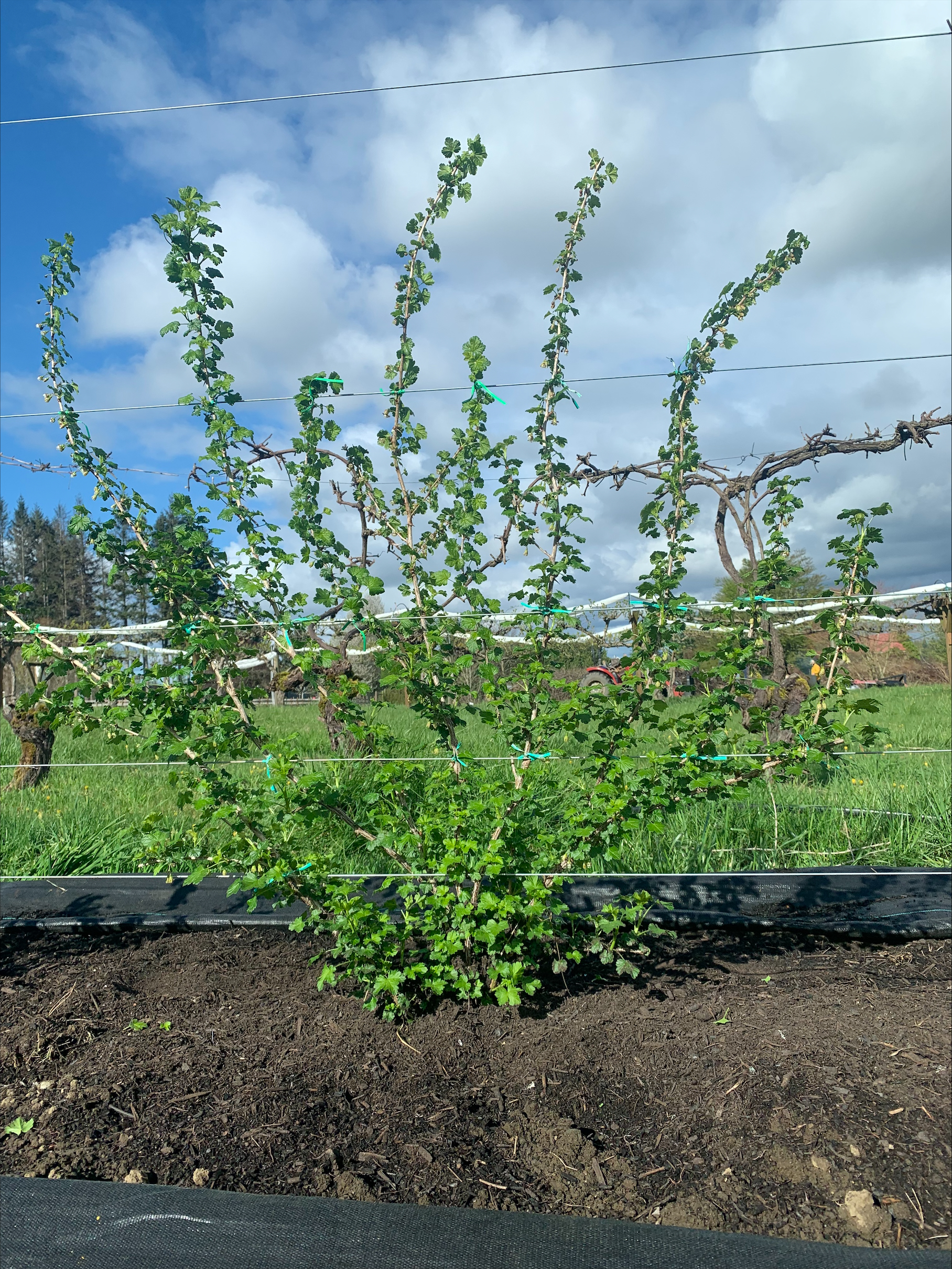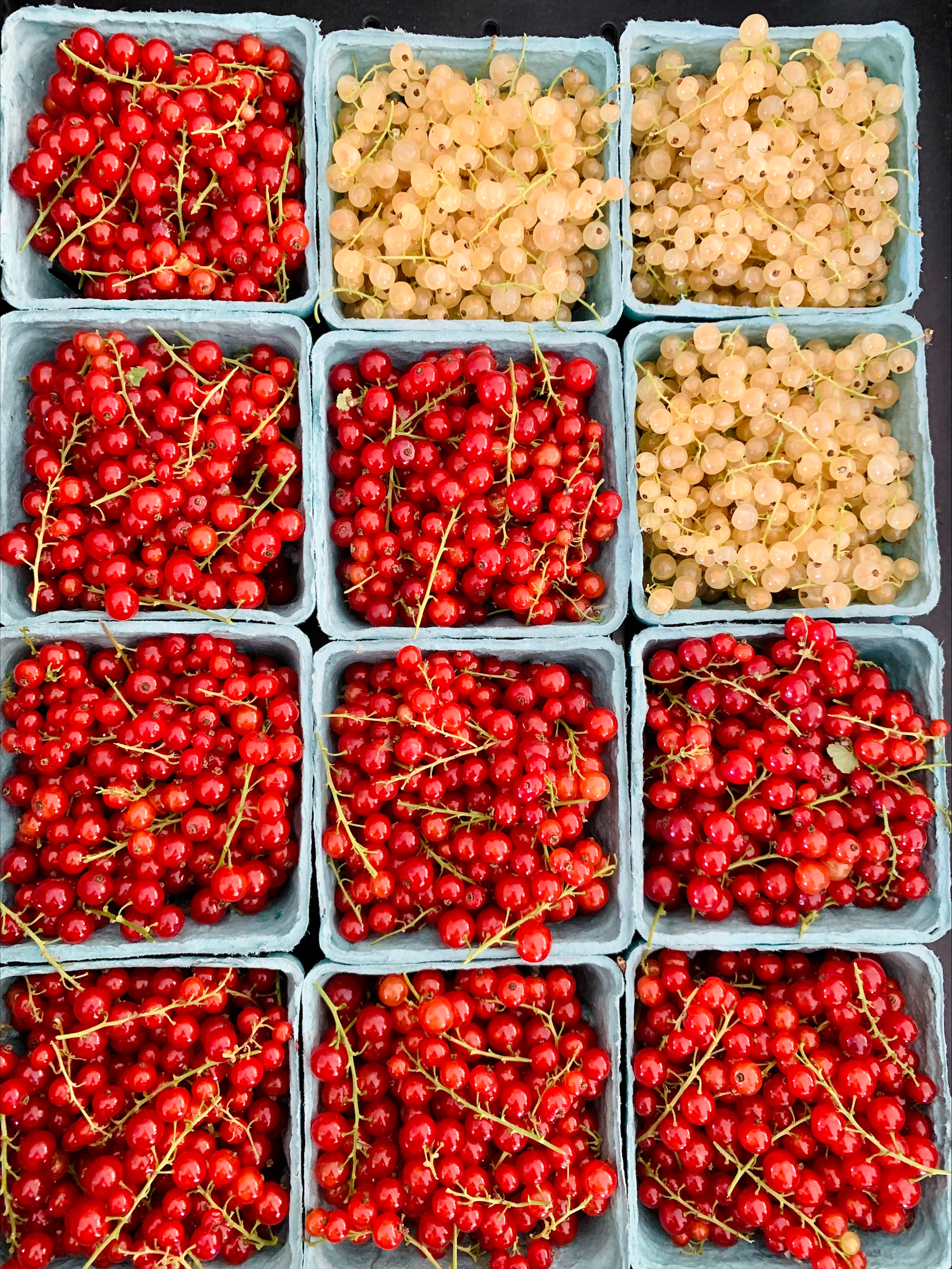
Some of the more unusual and delicious fruits we grow at Cloud Mountain Farm Center are those belonging to the genus “Ribes”. Pronounced rye-bees, we use the term “Ribes” to refer to the many varieties of currants, gooseberries, and jostaberries that grow here on the farm.
What are Ribes?
Ribes plants are shrub-like and hardy, with fruit usually ready for harvest in July. They grow well here in the Pacific Northwest and are suited both to production scale and incorporation into a backyard perennial garden. Currants and gooseberries both have high natural levels of pectin, which makes them ideal for use in jams, jellies, and pies. Before the adoption of commercial pectin, many people grew currants or gooseberries for this specific purpose! While Ribes are generally more on the tart side, they can easily be sweetened with sugar or another sweetener for syrups or jams. Many varieties are sweet enough to be eaten fresh as well!
Our Plantings
We have two plantings of Ribes here at the farm. One is pruned to bush-form, and the other is a newer trellised planting. The trellised planting was designed after European currant production systems, where the fruit is much more popular. Our red, pink, and white currants are trained in a 2-dimensional, 3-leader cordon system. Our black currants, jostaberries, and gooseberries are trained to a 2-dimensional fan system. These training methods simplify pruning and harvest and allow for easier pest and disease management. This will be the first year we are harvesting off this planting – we’re excited to see (and taste!) the fruits of our labor.

The White Pine Blister Rust Problem
Ribes aren’t as well-known or popular in the United States as they are in Europe, and that’s mostly because of one particular pest: White Pine Blister Rust. This rust affects Western white pine and can be devastating to the timber industry, and it just so happens that the rust’s alternate hosts are currants and gooseberries. This is not a native rust, but was introduced to British Columbia and New York around 1910 and had spread to Washington by the 1940’s. With heavy pushing from the timber industry, the U.S. government banned the farming of Ribes; this ban wasn’t lifted (and then only state by state) until 1966. Since then, rust-resistant and -immune varieties have been adopted and production has grown, but incrementally.

How to Eat Ribes
Currants and gooseberries make for great juice, jam, jelly, pastries, syrups, and pies. Black currant juice is very popular in parts of Europe (more ubiquitous than grape juice), and black currant scones are delicious. Red currants make a fantastic syrup when sweetened slightly and can be used for cocktails and mocktails. Gooseberry jelly is a particular favorite too – the tart notes shine through like a membrillo.
You can find our Ribes in July at the Bellingham Farmers Market, Twin Sisters Markets, and through the Puget Sound Food Hub.
You can purchase Ribes plants from our nursery.

